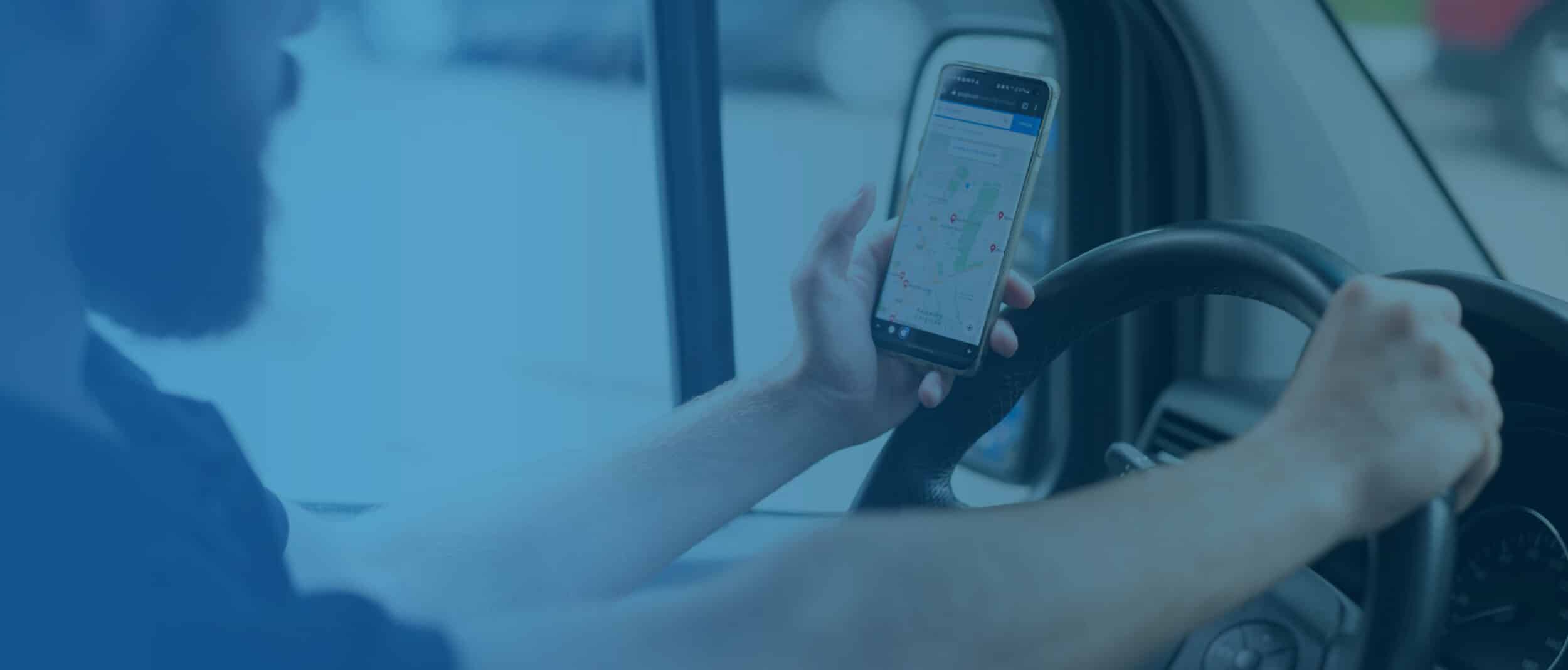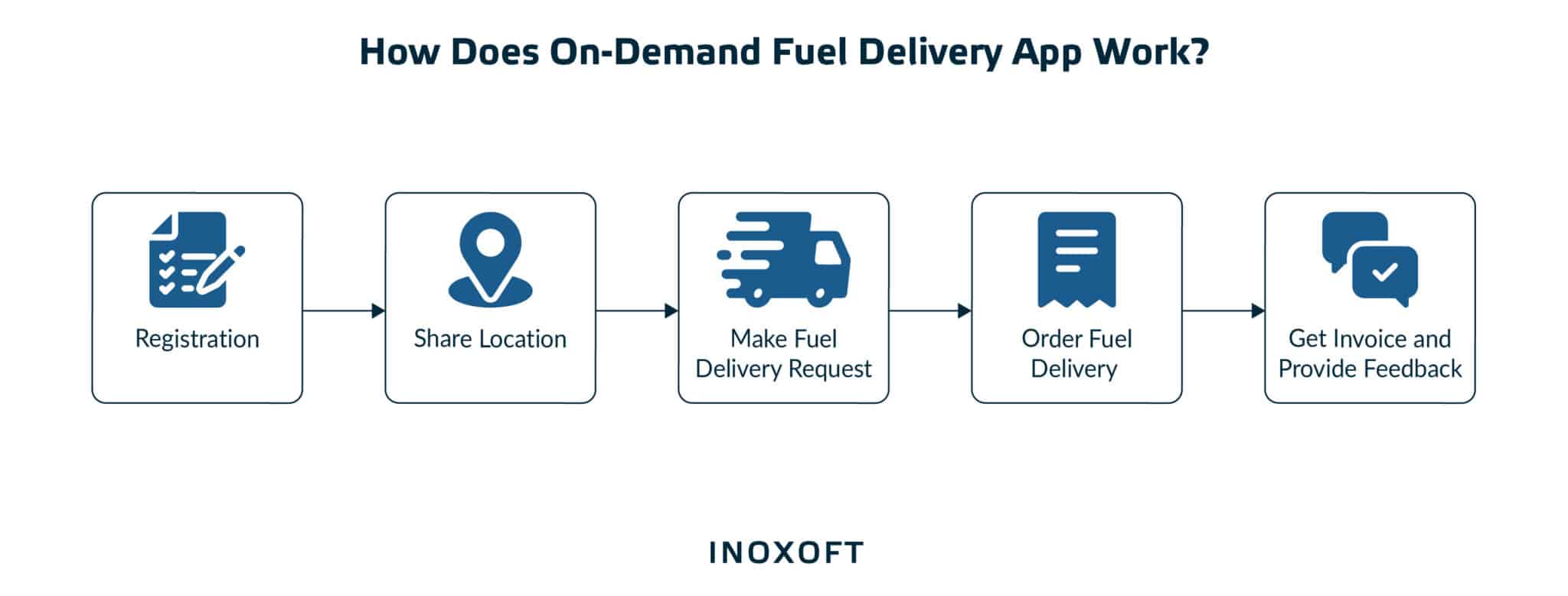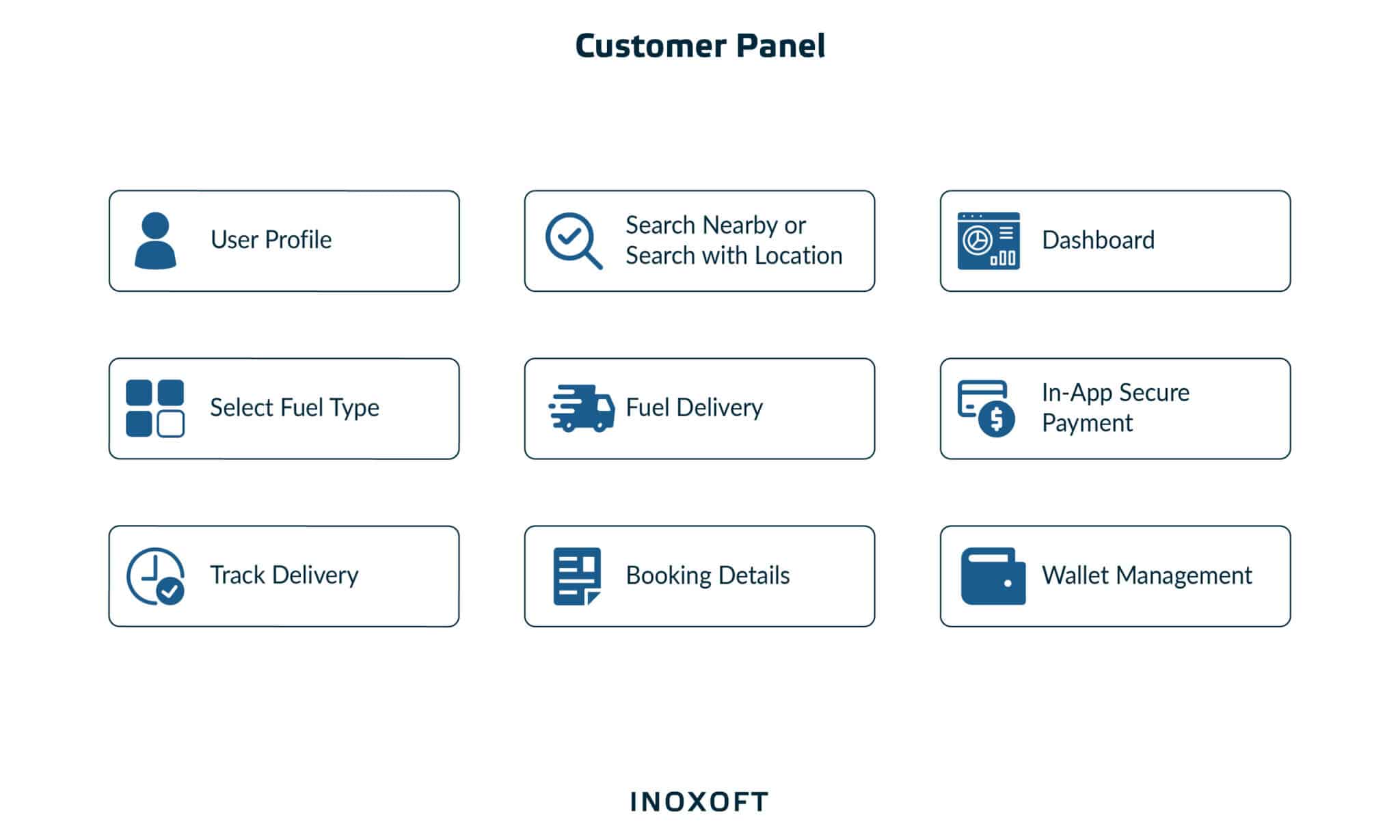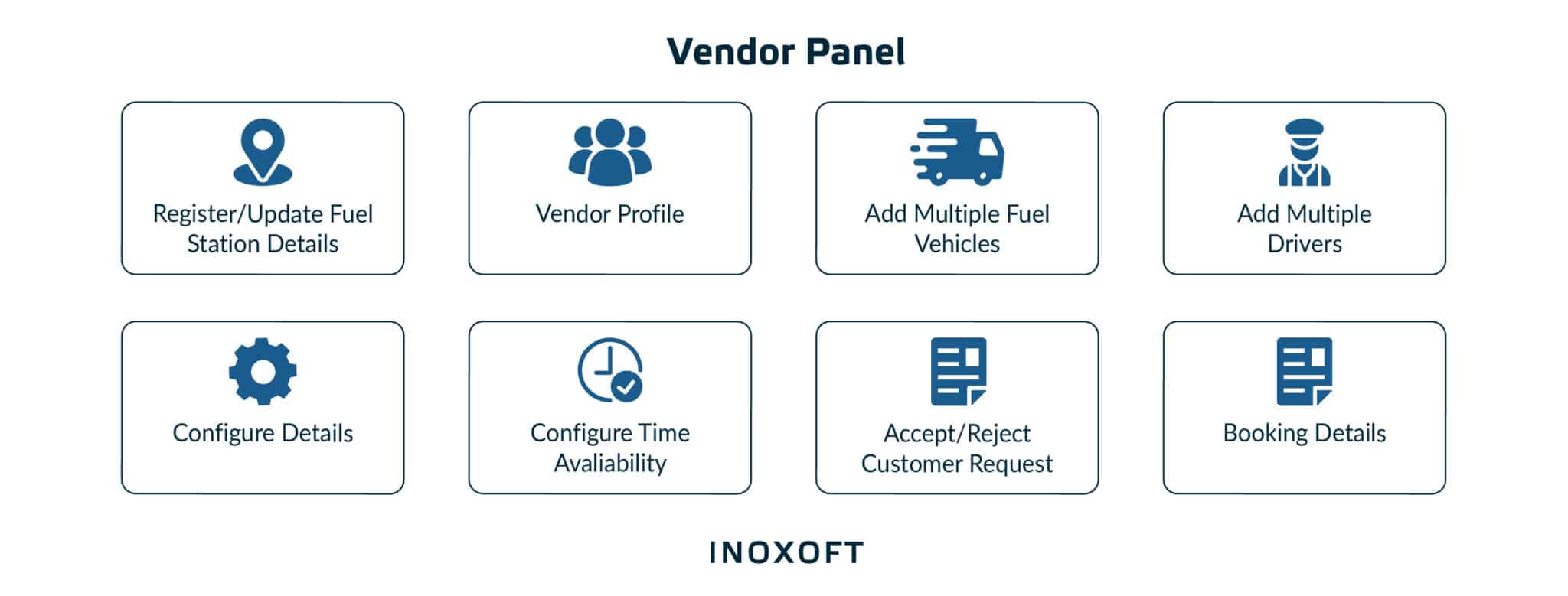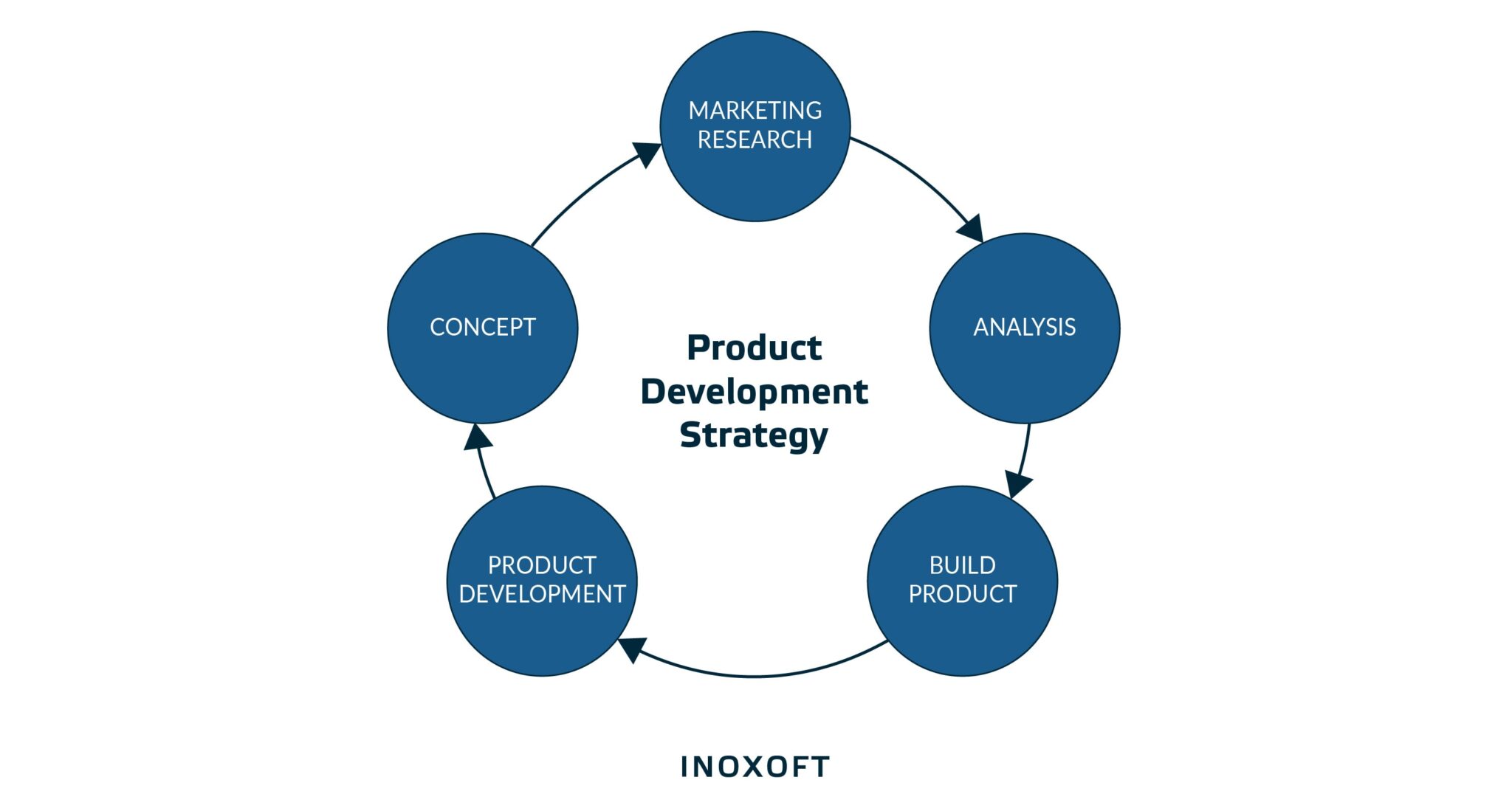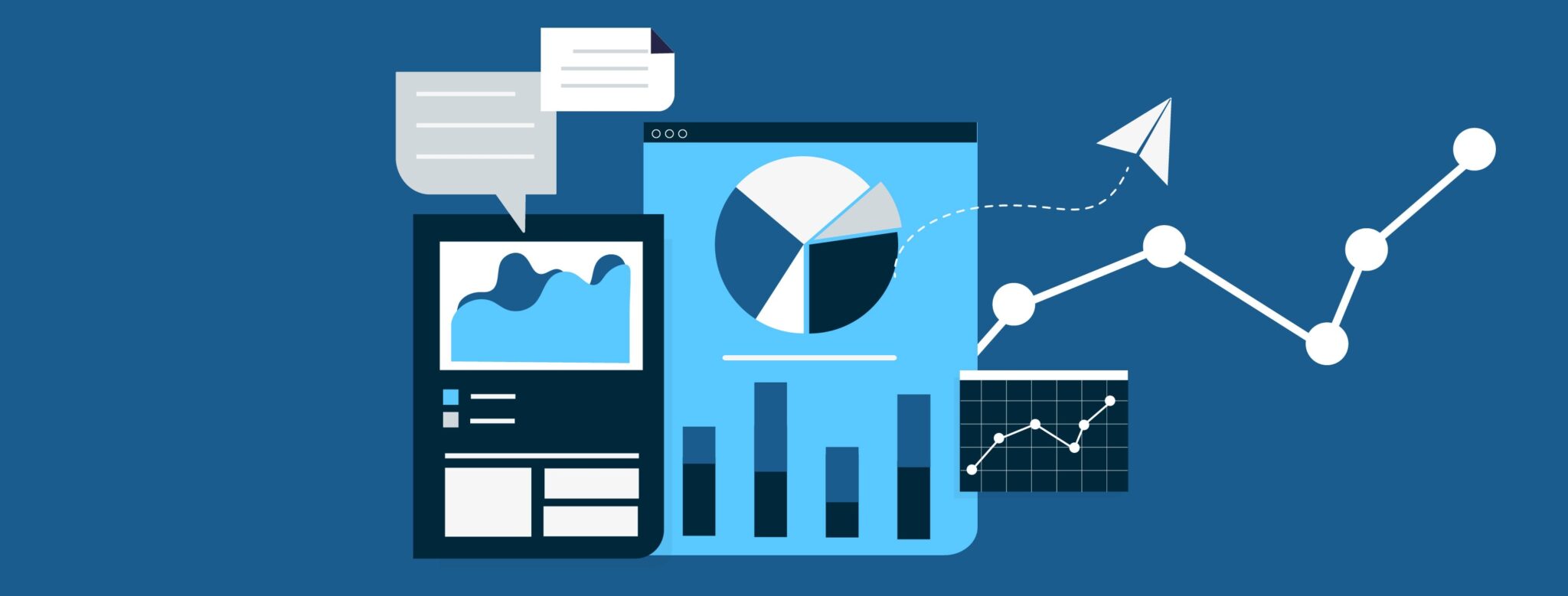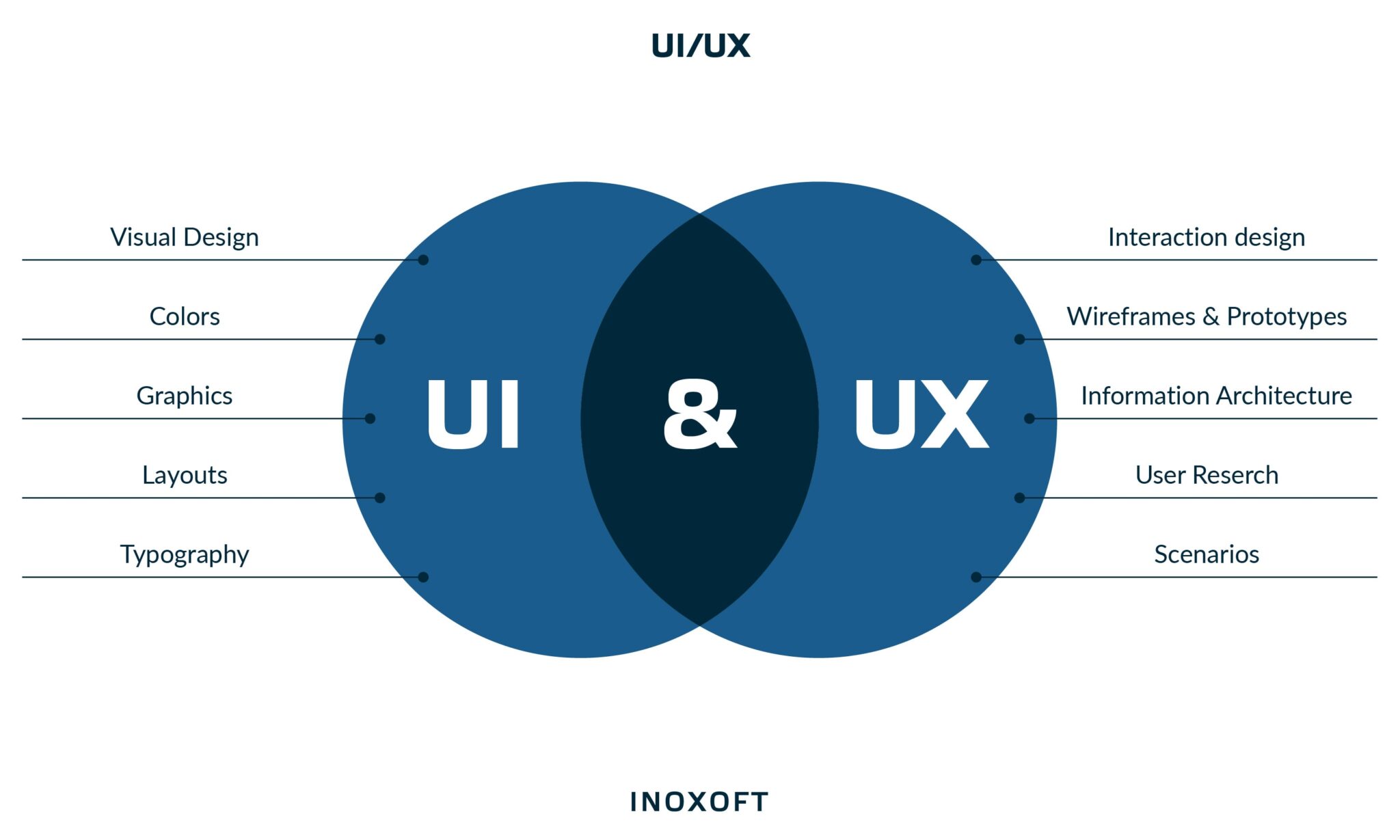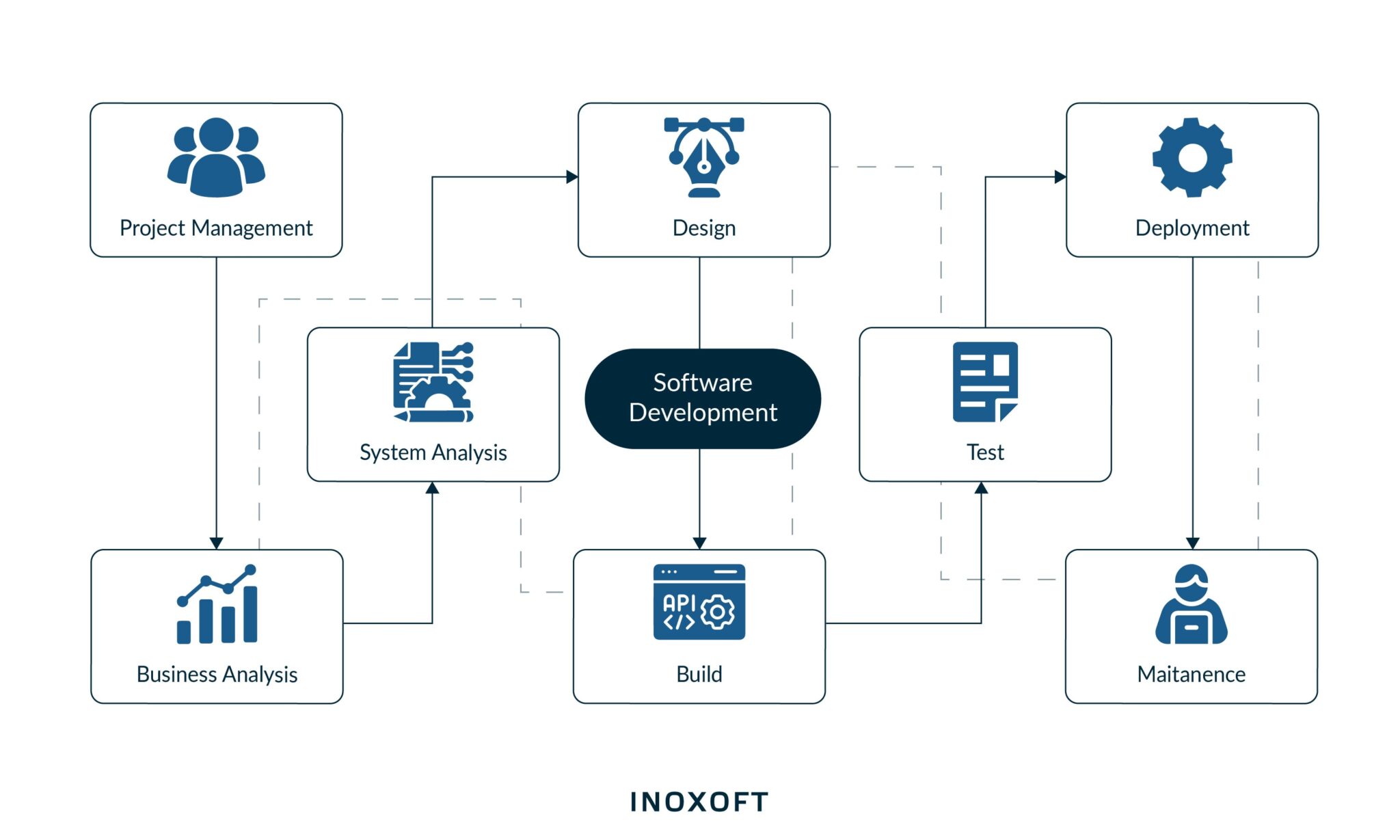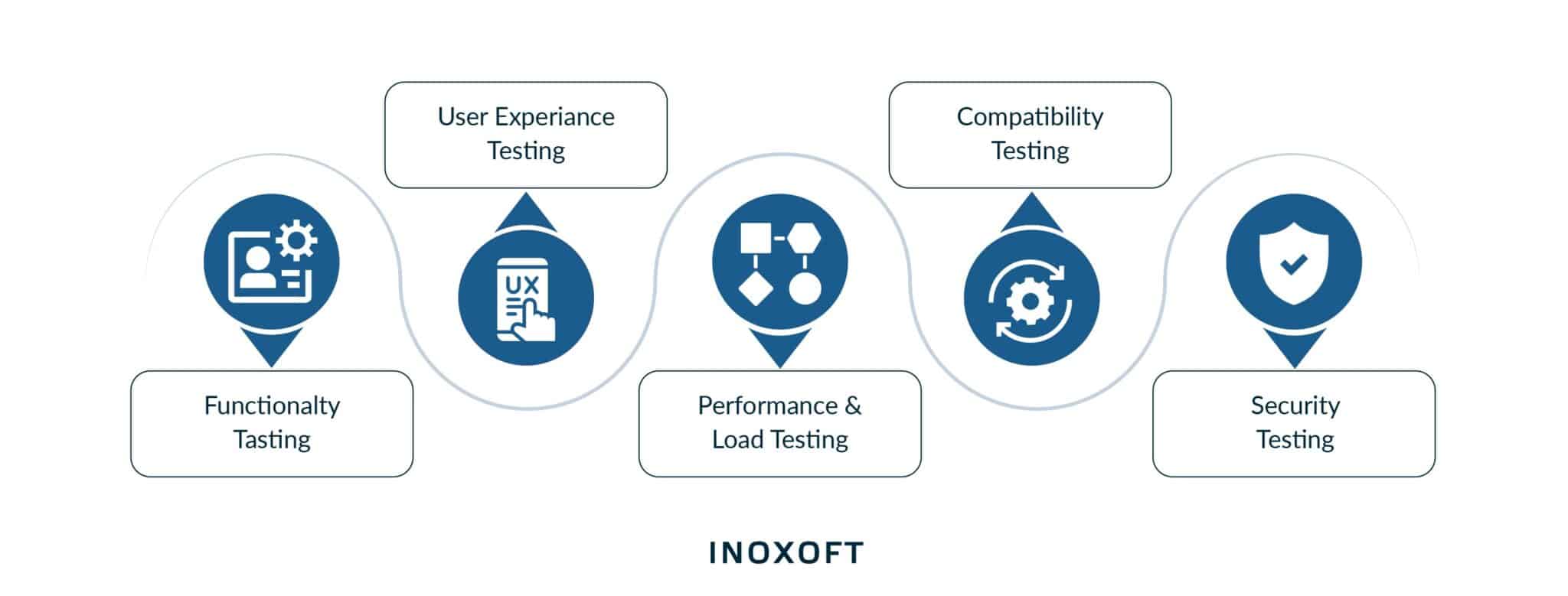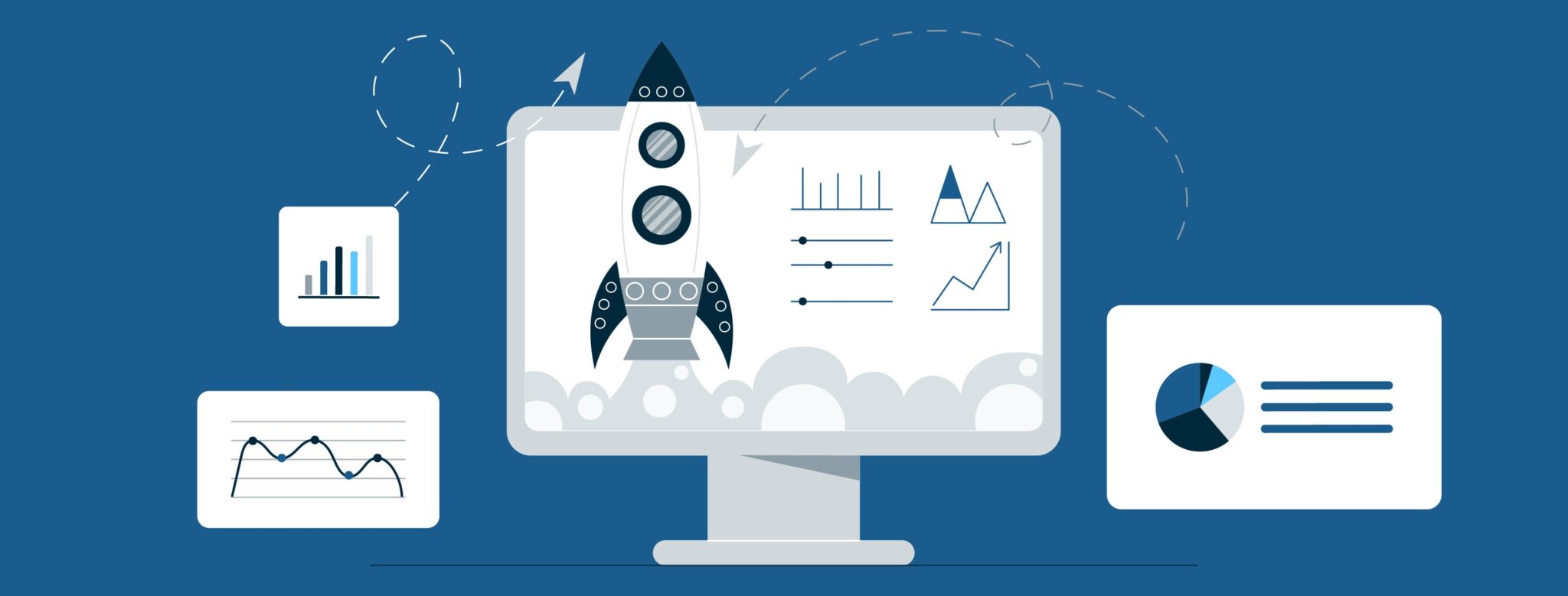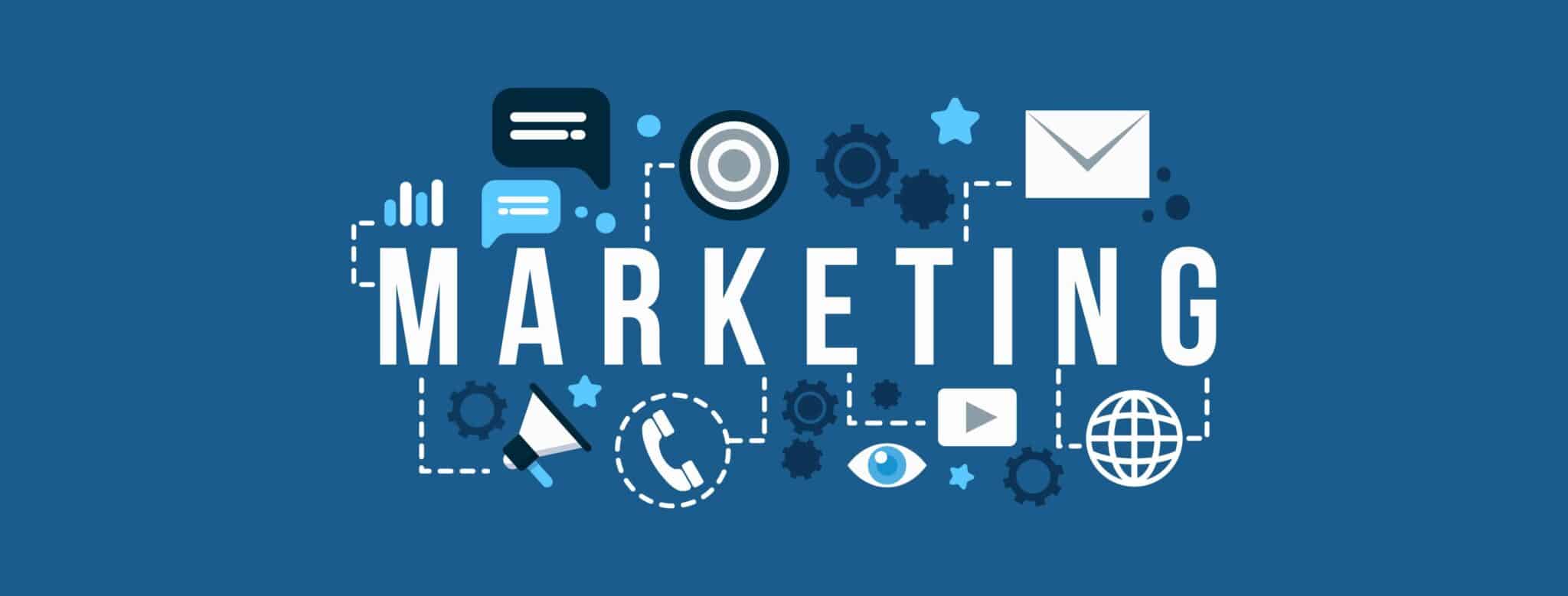Are you tired of running out of fuel during a trip or waiting in long lines at the gas station? With on-demand delivery services for groceries, gadgets, clothing, and home appliances, it's only natural that fuel delivery be available on demand as well. On-demand fuel delivery is a convenient solution to the inconveniences and emergencies car drivers may face on the road.
Although on-demand fuel delivery is an emerging technology, it is already creating opportunities for business. The market is flourishing and is projected to exceed $596 million globally by 2027, according to Business Research Insights.
Wondering how to start your own fuel delivery business? This comprehensive fuel delivery app development guide is for you. We will
- define what an on-demand fuel delivery app is
- provide the market overview
- explain how these apps work
- highlight their benefits and critical features
- provide guidance for developing an on-demand fuel delivery app, including its challenges and top examples.
Lastly, we'll share Inoxoft's experience developing Refuelrs, an on-demand fuel delivery app.
- What is an On-Demand Fuel Delivery App?
- Fuel Delivery Market Review
- How Does an On-Demand Fuel Delivery App Work?
- Pass registration
- Share location
- Make fuel delivery request
- Order fuel delivery
- Get invoice and provide feedback
- Benefits of Using Fuel Delivery Applications for Clients
- Saving time
- Responding to emergencies
- Preserving the environment
- Ensuring high quality
- Enhancing convenience
- Things to Keep in Mind Before Fuel Delivery App Development
- Ensure safe fuel transportation
- Hire experienced drivers
- Partner with fuel carriers
- Follow all protocols
- On-Demand Fuel Delivery Business Models
- Independent fuel delivery platform
- Fuel delivery aggregator
- Must-Have Features for Your Fuel Delivery Application
- Customer panel
- Vendor panel
- Driver panel
- The Fuel Delivery App Development: Full Guidance
- Create a strategy
- Research and analyze
- Obtain licenses
- Consider UI/UX design
- Development
- Test
- Deploy and launch
- Focus on marketing
- Fuel Delivery App Development Challenges
- Safety concerns
- Legal issues
- Popular On-Demand Fuel Delivery Apps
- Filld
- Yoshi
- GasBuddy
- Lyft
- Consider Inoxoft Your Trusted Partner
- Refuelrs: An On-Demand Home Fuel Delivery App
- How to start a fuel Delivery Business
- License
- Professional Drivers
- Technology Integration
- On-Demand Fuel Delivery App
- Break Into Fuel Delivery App Development with Inoxoft
What is an On-Demand Fuel Delivery App?
An on-demand fuel delivery app is a program that enables customers to receive the fuel they need, delivered directly to their vehicle’s tank at their desired location and time. By signing up and logging into the app, users can specify the fuel quantity, type, time, and location to receive hassle-free fuel delivery.
This program eliminates the need for customers to go to gas stations and wait in long lines, freeing up time for more important work. These apps can refuel a car wherever there is a precise GPS location, such as in a parking lot, at home, or anywhere else. On-demand fuel delivery apps are especially helpful for customers who may find themselves stranded in remote areas with an empty fuel tank.
Fuel Delivery Market Review
The global market for fuel delivery systems was estimated at $10.3 billion in 2022 and is anticipated to grow further.
The United States has a market worth $2.8 billion in 2022, with China predicted to have a market worth US$2.6 billion by 2030, growing at a 5.1% CAGR from 2022 to 2030. Japan and Canada are two other notable markets, with expected growth rates of 1.7% and 2.6%, respectively, between 2022 and 2030.
In Europe, Germany is anticipated to expand at a CAGR of about 2.1%. By 2030, the market in the Asia-Pacific region is expected to reach US$1.7 billion, led by countries like Australia, India, and South Korea.
According to Business Research Insights, the market for on-demand fuel delivery was valued at $214.97 million in 2022 and is estimated to increase to $536.37 million by 2027, with a CAGR of 18.54% for the entire forecast period.
The same research highlights the following trends in the development of the on-demand fuel delivery market:
- The global market is expected to penetrate significantly in the near future due to the increase in sales and production of passenger cars and commercial vehicles, particularly in developing countries like China and India.
- The market for on-demand fuel delivery is expected to grow as more countries adopt natural gas vehicles.
- The on-demand gasoline delivery market is changing rapidly due to increased sales across all vehicle types.
- Technological advancements to improve engine fuel economy and efficiency are significantly impacting the industry.
How Does an On-Demand Fuel Delivery App Work?
What is a fuel delivery app? Using it is similar to using Uber to order a taxi: with just a few clicks, users can have fuel delivered to their preferred location. Here’s a step-by-step guide on how the fuel delivery app operates:
Pass registration
To schedule fuel delivery requests, users must download and install the on-demand fuel delivery app from Google Play or the App Store. They then enter personal information such as their name, contact information, and the type of fuel required. Additionally, customers can link their bank cards to pay for fuel delivery orders.
Share location
Sharing live locations or specifying areas where refueling services are available is an essential step to schedule fuel supply requests. Usually, there is also an option to provide the delivery address manually if sharing the location doesn’t show the exact place correctly.
Make fuel delivery request
The user initially submits a request for fuel delivery, providing a detailed description of the fuel type and the required quantity. All trucks in the area receive the request for fuel delivery, and the driver who accepts it first is given the order. After that, the user chooses the fuel type and the quantity.
Order fuel delivery
As soon as a fuel supplier in the area receives the order, the delivery process starts. The truck, with convenient tracking provided by built-in maps, moves to the location where fueling is required. When the driver arrives at the destination, they fill the tank while adhering to all safety regulations and requirements to ensure secure fuel delivery. The user pays using their specified payment method after the refueling request is completed.
Get invoice and provide feedback
After the fuel has been delivered, the users receive a copy of the invoice along with a message that the delivery was successful. They also receive a request to provide feedback on the product they received and can rate their satisfaction with the service.
Benefits of Using Fuel Delivery Applications for Clients
The emergence of on-demand fuel delivery applications has enabled consumers to refuel their vehicles whenever and wherever they want, without ever having to stop at a gas station. Numerous advantages have contributed to their popularity. By understanding clever strategies to make these apps productive, businesses can further enhance the range of fuel delivery apps development benefits.
Saving time
Fuel delivery applications eliminate the need to visit a gas station and wait in line to fill a vehicle’s tank. This allows users to allocate their valuable time more efficiently, focusing on meaningful projects, spending time with loved ones, or resting.
Responding to emergencies
Running out of fuel in a remote location with no nearby gas station can be a driver’s worst nightmare. Additionally, carrying extra fuel is hazardous due to its explosive nature. Fuel delivery apps, however, enable on-demand fuel delivery with just a single click.
Preserving the environment
Carrying fuel on long trips can be dangerous if not managed properly, as it poses a risk of fire. Contaminated or spilled fuel is also harmful to vehicles. Therefore, fuel delivery services contribute to environmental protection by reducing these risks.
Ensuring high quality
On-demand delivery companies guarantee clean, high-quality fuel by using a double-filtered oil supply that is cleaned weekly. This ensures that customers receive premium gasoline.
Enhancing convenience
Fuel delivery apps allow users to track the delivery truck in real time using GPS features, keeping them informed about its location and any unexpected delays. This enables customers to plan their time effectively and know exactly when their fuel delivery order will be fulfilled.
Things to Keep in Mind Before Fuel Delivery App Development
Before launching your fuel delivery business, it’s essential to consider several factors that will contribute to its success. The following points are crucial for starting a fuel delivery service:
Ensure safe fuel transportation
Standard delivery vehicles are not suitable for transporting fuel, as it is an explosive, delicate, and hazardous substance. It needs to be transported and stored safely. Consider using a combustion-proof, airtight truck specifically designed for fuel delivery.
Hire experienced drivers
For handling such a dangerous product, it’s highly beneficial to employ skilled truck drivers. Your customers will have a better experience if the fuel is delivered flawlessly and as quickly as possible.
Partner with fuel carriers
Conduct thorough research to determine the type of fuel carrier you should collaborate with. Once you’ve identified a suitable one, negotiate favorable partnership terms. Alternatively, you can establish partnerships with fuel station owners.
Follow all protocols
Proper documentation is crucial for legitimizing your business. Complete the registration process, pay any required fees, and adhere to all applicable laws. Legal regulations may vary, so it’s essential to familiarize yourself with local requirements.
On-Demand Fuel Delivery Business Models
Before proceeding with your on-demand fuel delivery application development, it’s essential to choose a suitable business model. Two primary options are available, and understanding each one will help you make an informed decision.
Independent fuel delivery platform
In this delivery model, service providers act as independent fuel stations. They maintain their own fleets of truck drivers who manage fuel transportation, delivering it directly to customers’ locations.
Fuel delivery aggregator
This model allows multiple fuel delivery service providers to access a shared fuel delivery platform, offering refueling services to users through the platform. The platform owner oversees transportation and receives a commission for each transaction.
Additionally, businesses can adopt a hyperlocal delivery approach, which presents a unique advantage by exploring untapped regions. Launching a hyperlocal app for fuel delivery after thorough research can be a strategic move. The choice of a business model is vital to the success of the fuel delivery industry, so make sure to carefully consider your options.
Must-Have Features for Your Fuel Delivery Application
Before diving into the fuel delivery app’s features, it’s important to note that any such app should have three distinct panels, each with its own set of functionalities:
- Customer panel
- Vendor panel
- Driver panel
Customer panel
The customer panel is what users see on their screens. It should include the following features to cater to users’ needs and provide an excellent user experience:
- User profile: Customers can register on the app or use social networks to log in, accessing their customized profiles with all necessary features.
- Search nearby or search with location: This feature enables users to find nearby fuel suppliers using GPS or manually entering the location.
- Dashboard: Users can view various data and statistics about their order history, add funds to their app wallet, and more.
- Select fuel type: This feature lets customers input the fuel type they need, the required quantity, and place a fuel delivery order.
- Fuel delivery: After placing an order, fuel is delivered to the specified location using integrated Google Maps for efficient navigation.
- In-app secure payment: Users can save their credit and debit card information for automatic debiting once the fuel is delivered and filled.
- Track delivery: Customers can track the delivery person’s location and expected arrival time using integrated Google Maps.
- Booking details: Users can review their planned, ongoing, completed, and canceled orders.
- Wallet management: This feature records transaction details and allows customers to check their wallet balances.
Vendor panel
The vendor panel assists fuel delivery suppliers in managing upcoming orders, driver lists, delivery details, and more. It should include the following features:
- Register/update fuel station details: Suppliers can register their fuel stations with essential information and documentation.
- Vendor profile: Vendors can access a fully customized profile, view driver lists, delivery information, upcoming orders, and more.
- Add multiple fuel vehicles: This feature allows vendors to provide relevant information and manage multiple vehicles.
- Add multiple drivers: Vendors can add, update, and remove drivers and their information.
- Configure details: Suppliers can customize fuel information, prices, availability, and cancellation policies for transparency.
- Configure time availability: Vendors can set gas station operating hours.
- Accept/Reject customer requests: Vendors can accept or decline customer orders.
- Booking details: Suppliers can access booking information such as requests, active reservations, and canceled reservations.
Driver panel
The driver panel is the simplest of the three panels, enabling drivers to configure their profiles, get verified, check assigned orders, and locate customers.
Register/update fuel station details: Suppliers can register their fuel stations with essential information and documentation.
- Driver profile: Drivers can create customized profiles, and view assigned deliveries, completed tasks, working hours, pending and upcoming deliveries, customer locations, distance traveled, and more.
- Check assigned delivery: Drivers receive notifications for new deliveries and can access relevant information in their app.
- Navigate to customer’s location: Drivers can easily locate customers using integrated Google Maps.
- OTP verification: OTP (one-time password) verification adds an extra layer of security. After the driver completes the delivery, the customer provides an OTP to finalize the order.
The Fuel Delivery App Development: Full Guidance
So, how to build a fuel delivery app? Transforming an on-demand fuel delivery business strategy into a complete solution can be challenging. The development process should be well-organized, well-researched, and thought-out to succeed. The process used by top app development companies is described below.
Create a strategy
To develop an effective strategy for fuel delivery app development, you need to share your app ideas with the technical team and business analyst of the software development company. Together you will discuss the objective behind your app development.
Research and analyze
After considering the needs of the target audience, the competitors, and the most recent technological advancements, stakeholders should gather to conduct research and evaluate the viability of the fuel delivery app idea in the niche market.
The analysis helps the team reveal information that could otherwise go unnoticed, such as cutting-edge features that could help the fuel delivery app succeed in a certain area. A development roadmap for the app should be created during the research and analysis phase.
Obtain licenses
To launch an on-demand fuel delivery app, you need government approval and a license from the appropriate authorities. Every fuel delivery company must abide by a set of rules established by the relevant authorities.
Consider UI/UX design
A clean and straightforward design sets the app apart from the competition. The team aims to create a user-centered UI/UX design to minimize the learning curve for customers using fuel delivery software solutions. Engineers follow the latest UI/UX design trends to create user-friendly designs that appeal to users.
Development
During the on-demand fuel delivery app development, all the planning, research, and analysis are implemented to ensure excellent performance. In this phase, software developers who know how to develop a fuel delivery app create the app functionalities, taking care of backend development, API integration, database management, and security systems. Explore the best software development project management tools in our blog.
Test
App testing is essential to ensure the fuel delivery app functions, performs as specified in the project scope, and meets the client’s expectations. During the testing phase, any loose ends, UI design flaws, and bugs are addressed to ensure the fuel delivery app succeeds.
Deploy and launch
The engineering team deploys and launches the fuel delivery solution on the development platform for which it was designed. The team also ensures future app maintenance and support based on the contract agreed upon before the development started, adhering to best practices and taking user feedback into consideration.
Focus on marketing
Once the development and deployment of your fuel delivery app are complete, promote your application and services through various online and offline channels. You will need a solid marketing strategy to spread the word about your services. To achieve that, you can work with a marketing agency.
Read more on how to create a fuel delivery app step by step in our blog.
Fuel Delivery App Development Challenges
Before starting fuel delivery application development, consider the pros and cons. We’ve discussed the advantages, so let’s explore the challenges:
Safety concerns
Safety is a significant challenge in fuel delivery. Spills may occur when fleets are on the road. Ensure qualified drivers, routine fleet safety assessments, and leak checks.
Legal issues
Online fuel delivery is new, and laws vary by country. Know the rules in each location before launching. Don’t be scared of legal challenges; expert advisers can help you launch smoothly.
Popular On-Demand Fuel Delivery Apps
Fuel delivery systems are connecting fuel stations and customers seeking refueling services. Here are some well-known apps:
Filld
Operating in the Washington and Bay areas, Filld offers on-demand delivery services. Users can choose from various gasoline types and pay with a card. Deliveries occur between 10 PM and 5 AM, ensuring faster service due to less traffic. The business keeps expanding its services throughout the United States.
Yoshi
Yoshi is an USA-based start-up provides 24/7 fuel delivery in multiple cities. Users can schedule gasoline delivery, car washing, maintenance, oil changes, and more via text or the app.
GasBuddy
Headquartered in Boston, GasBuddy is a digital company that manages apps with real-time gasoline pricing at over 140,000 gas stations across the US and Canada. GasBuddy connects drivers to nearby gas stations and displays current gas prices. This app helps you find the most affordable gas rates in your area. It allows you to pay for your purchase with a credit or debit card.
Lyft
Lyft is a multimodal transportation network that operates a ridesharing system connecting riders and drivers. In addition to ridesharing, it also offers on-demand fuel delivery services. Drivers can request fuel deliveries using the app, and a Lyft driver will deliver it. This service is available in select markets.
Consider Inoxoft Your Trusted Partner
Inoxoft is an outsourcing company that offers custom web development services. We also excel in developing mobile applications. Customers worldwide approach our company with various business needs and specifications for potential applications.
We understand how to organize our work, interact with business owners to obtain the most crucial information, and provide consistent mobile solutions for your company. The Inoxoft team developed an on-demand web and mobile application focusing on fuel delivery for new purchases and refills of essential home fuels. Let’s review the case study of creating fuels delivery app.
Our team knows how to organize work, collaborate with business owners to gather essential information and deliver consistent mobile solutions for your organization. For example, Inoxoft developed an on-demand web and mobile application focused on fuel delivery for new purchases and refills of essential home fuels. Let’s take a look at this fuel delivery app case study.
Refuelrs: An On-Demand Home Fuel Delivery App
Our client, an American entrepreneur, aimed to make domestic fuel delivery available to local residents and carried out in accordance with American legal and technical norms. Inoxoft has developed a user-friendly on-demand web and mobile application focusing on 24-hour delivery service for new purchases and refills of vital home fuels.
US laws restrict the purchase, sale, and distribution of essential home fuels without proper authorization. Moreover, differing regulations across states make the delivery process challenging for Americans. As a result, our developed web and mobile solutions simplify the complex fuel distribution process.
The on-demand web and mobile delivery application created by Inoxoft’s software engineers provides users with robust functionality:
- Secure system and streamlined operation;
- Ability to perform statistical analyses at various organizational levels, from individual employees to the entire company;
- Automatic and uninterrupted survey conduction;
- Flexible options for resolving internal issues and misunderstandings;
- Quick report submission through the app;
- Increasing business executives’ awareness of authentic culture and relationships within the organization;
- Establishing a communication platform for coworkers to share suggestions, praises, and concerns.
How to start a fuel Delivery Business
The demand for fuel delivery services is increasing as people seek options to order and receive fuel at their places. So this domain is quickly gaining traction in the market.
Usually, the process of starting a new business remains common: market research and business plan, the right business Model, Pricing Strategy, Financial Management, etc. So we’ve decided to highlight some key elements that are most important here. This will be useful if you are interested in how to start your own fuel delivery business.
License
Obtaining the licenses and permits is a critical step for a fuel delivery business. Ensuring compliance with local, state, and federal regulations is essential to operate legally and build trust with customers. For instance, in the USA, all fuel delivery startups follow Fuels Regulatory Streamlining by EPA and Hazardous Materials Regulations by PHMSA.
Approved licenses also demonstrate your commitment to safety and environmental responsibility.
Professional Drivers
As an on-demand fuel delivery company, you are going to deal with HAZMAT. Experienced drivers pay attention to road routes and know how to transfer combustible fuel to customer’s locations safely.
Technology Integration
Another aspect you will think of is a solid IT infrastructure and advanced technology integration. Leveraging technology like mobile apps, GPS tracking, and data analytics tools streamlines operations, enhances customer convenience, and improves overall efficiency.
On-Demand Fuel Delivery App
Last but not least is to launch an on demand fuel delivery app development that allows clients to seamlessly order fuel and serves as a great tool fuel delivery business.
Break Into Fuel Delivery App Development with Inoxoft
If you’re searching for a promising business niche that is relatively new, consider entering the fuel delivery industry. Although the global on-demand fuel delivery market is still in its early stages, projections indicate substantial growth over the next five years.
But how to make a fuel delivery app that will succeed in the market? The answer lies in partnering with the right fuel delivery app development company experience.
Inoxoft is an international software development company and a certified partner with experience in building a top-notch on-demand web and mobile delivery app for essential home fuels. Our app development professionals understand how to create a fuel delivery app that will address all potential legal and technical challenges while navigating complex fuel delivery regulations.
Reach out to us to discuss your fuel delivery solution and receive an estimate.
Frequently Asked Questions
What is an on-demand fuel delivery app?
An on-demand fuel delivery app enables customers who prefer not to visit gas stations to refuel their cars anywhere in the city. Users simply mark their car's location, and a fuel delivery driver will arrive to fill the tank at the chosen time and place.
How do I start my fuel delivery business?
The process of fuel delivery app development consists of several crucial phases, including creating a strategy, conducting in-depth research and analysis, obtaining a license, planning the UI/UX design, developing the app's functionalities, and testing, deploying, launching, and marketing your app.
How do I create an on-demand fuel delivery app?
If you want to build on demand fuel delivery application, the best solution is to find a reliable software development partner with relevant experience in fuel delivery app development. Communicate effectively with the software engineering team throughout the project to achieve your business goals.
What are the features of the fuel delivery app?
A fuel delivery app typically has three panels: customer, vendor, and driver. Each panel has a unique set of features that allow customized access to the app's functionalities required for each user type.
What are the benefits for clients of using a fuel delivery app?
Various benefits come with using a fuel delivery app for clients. These include time savings, handling emergencies, enhanced convenience, higher fuel quality, and increased safety for users and the environment.
